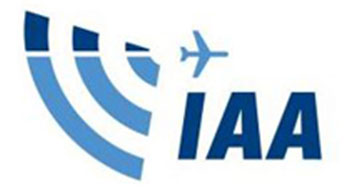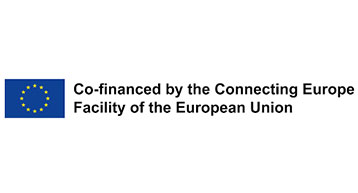About A-CDM
A-CDM stands for Airport Collaborative Decision Making (CDM). Airport CDM is an operational process which aims at improving Air Traffic Flow and Capacity Management (ATFCM) at European airports by reducing delays, improving the punctuality of events and optimising the utilisation of resources. As a result, this will increase efficiency at every stage of the turnround process and will ultimately increase European airspace
This project is co-financed by the European Union's TEN-T programme
A-CDM Partners and Process

A-CDM is designed to make processes more transparent and promote the extensive exchange of data and information between all those involved. Partners include
- Dublin Airport (daa)
- Irish Aviation Authority (IAA)
- Aircraft Operators (AO)
- Ground Handling (GH)
- Network Manager Operations Centre (NMOC)
Estimated Off-Block Time (EOBT), until the Actual Take Off Time (ATOT), using a sixteen milestones approach to track the turn around process.
The decision making between partners is dependent upon the sharing of accurate and timely information and upon adapted Airport CDM procedures, mechanisms and tools.
Airport CDM allows an airport partner to make the right decisions in collaboration with other airport partners noted above, knowing their preferences and constraints in regard to the actual and predicted situation.
Memorandum of Understanding (MOU):
The signing of the Memorandum of Understanding by each stakeholder took place on 11 November 2014. This reflects the convergence of intention of all partners, towards the completion of the A-CDM project at Dublin Airport.
A-CDM Benefits
All participating parties, stand to benefit from the implementation of A-CDM. These benefits are as follows:
Aircraft Operators
- Improved awareness about the status & location of the aircraft
- Improved accuracy of arrival times at destination
- Accurate fleet prediction
- Reduced ground movements costs
- Transparent ground handling operation
- Less queuing at Runway holding points
- Reduced CO2 emission
Ground Handling
- Accurate arrival information
- Increased predictability
- Efficient use of existing resources
- Reduced amount of unplanned activities performed
daa
- Better use of existing resources
- Reduced Apron and Taxiway congestion
- Reduction of ground emissions
- Stable traffic flows & reduced taxi times
- Reduced noise
Irish Aviation Authority
- Improved Runway & capacity planning
- Reduced Apron and Taxiway congestion
- Better situational awareness during times of disruption and delays
- Better ATFM slot compliance & reduced number of missed slots
- Accurate take off times
- Accurate planning information for tower controllers
Passengers
- Reduced missed connections
- Accurate information during times of disruption
- Improved punctuality
- Reduction in delays
A-CDM Documents
Leaflet 1: Introduction to A-CDM
Leaflet 2: Target Off-Block Time (TOBT)
Leaflet 3: Target Start Up Approval Time (TSAT) and Target Take Off Time (TTOT)
Leaflet 4: Data exchange with the Network Manager Operations Centre (NMOC)
Leaflet 5: Information Sharing (AOS)
Leaflet 6: Variable Taxi Time (VTT)
Leaflet 7: Pre-Departure Sequencer (PDS) & Electronic Flight Strip
Flight Crew Briefing Document
A Pilots Guide to A-CDM
A Ground Handlers Guide to A-CDM EIDW
A-CDM abbreviations & acronyms
A-CDM Information Card EIDW (print credit card size)
ACDM Alarms Guide EIDW
ACDM DUB Operational Procedures
A-CDM Training
Introduction to A-CDM
EUROCONTROL E-learning course for A-CDM
EUROCONTROL A-CDM video
Contact us
For more information on A-CDM, please contact the A-CDM team: acdm@dublinairport.com
Related links

- European Airport CDM - Click here
- Irish Aviation Authority - Click here
